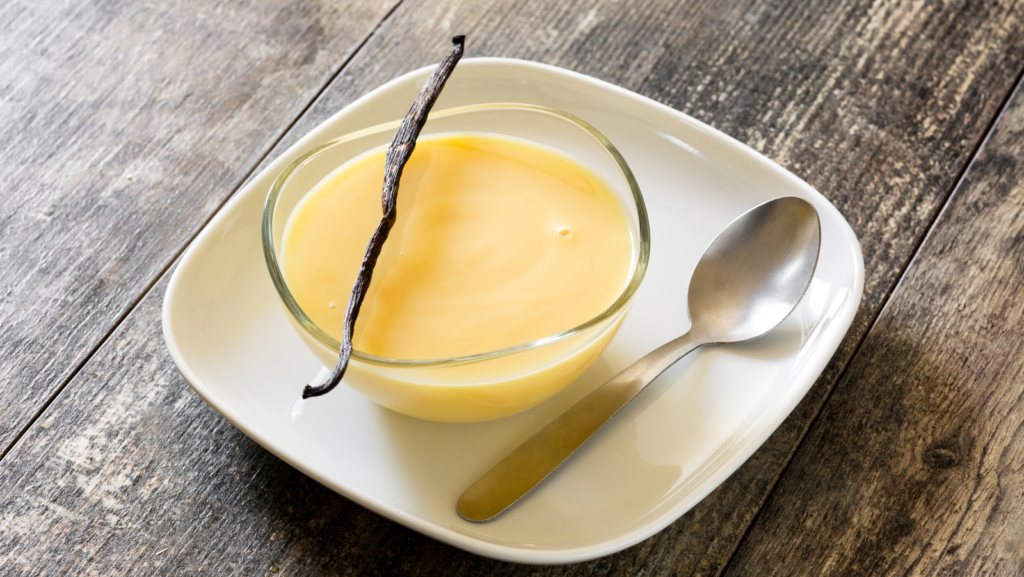Custard has been a beloved treat for centuries, enjoyed in various forms across different cultures. From its humble beginnings in ancient kitchens to its refined versions in modern desserts, this creamy delight has stood the test of time. Whether baked, stirred, or chilled, custard continues to be a favorite in households and fine dining alike. But where did it all begin, and how has it evolved over the years?
Have you ever wondered who first made custard? Was it an accidental discovery or a carefully crafted recipe passed down through generations? How did it transform from a simple mixture of eggs and milk to the rich, flavorful varieties we enjoy today? These questions highlight the deep and fascinating journey of custard through history.
In this article, we explore the history of custard, tracing its origins from ancient civilizations to its role in today’s desserts. You’ll discover how different cultures influenced its development and why Checkers Custard remains a top choice for custard lovers. Whether you’re a food enthusiast or just curious about your favorite treat, this guide will take you through time to appreciate custard in a whole new way.
You can also see Why Should You Not Boil Custard | Custard Tips
The Ancient Origins of Custard

Custard, a smooth and creamy delight loved worldwide, has a history that dates back thousands of years. While we often think of custard as a modern dessert, its origins can be traced to ancient civilizations that experimented with eggs, milk, and heat to create early versions of this beloved treat. The combination of these simple ingredients resulted in a thickened mixture that laid the foundation for the custard we enjoy today.
Early Uses of Eggs and Milk in Cooking
The concept of mixing eggs and milk dates back to ancient times when people discovered that heating these ingredients together created a thick, rich texture. Ancient Romans were among the first to explore this technique, using eggs to thicken sauces and desserts. Historical records suggest that Roman cooks prepared early versions of custard-like dishes, often sweetened with honey and flavored with spices. These creamy mixtures were not only enjoyed as desserts but also used in savory dishes.
Custard-Like Dishes in Ancient Roman and Greek Cuisine
In Ancient Greece and Rome, custard-like dishes were prepared using basic ingredients such as eggs, milk, and natural sweeteners. The Romans, known for their love of food experimentation, even created early versions of flan, a baked custard dish that later became popular in many cultures. The Greeks also had a similar dish that incorporated honey and nuts, making it a nutritious and flavorful treat. These early recipes laid the groundwork for custard’s evolution, influencing medieval and modern variations across different regions.
As custard-making techniques spread across continents, different cultures began refining the recipe, leading to the delicious variations we have today. Whether enjoyed in a simple baked form or infused with flavors, the ancient origins of custard remind us that this creamy delight has stood the test of time.
Custard in the Middle Ages: A Royal Delight
During the Middle Ages, the custard had evolved from a simple egg-and-milk mixture into a refined dish enjoyed by royalty and nobility across Europe. During this period, the art of custard-making flourished, with cooks experimenting with new flavors, textures, and serving styles. The widespread use of custard in both sweet and savory dishes made it a staple in medieval feasts, further cementing its place in culinary history.
A Favorite in Medieval European Courts
Custard gained popularity in the grand feasting halls of medieval Europe, particularly in the royal courts of England and France. Wealthy households and monasteries prized custard-based dishes for their rich texture and ability to be paired with various ingredients such as spices, fruits, and meats. Unlike the simple Roman versions, medieval custards were often baked or used as fillings in elaborate pastries and tarts, making them a luxurious treat reserved for special occasions.
The Birth of Custard Tarts and Pies
One of the most famous medieval custard creations was the custard tart, a dish that remains popular today. In England, custard pies and tarts became a delicacy, often flavored with nutmeg, cinnamon, and saffron, expensive spices that symbolized wealth and status. These early custard-based desserts were enjoyed at royal banquets and celebrations, solidifying custard’s reputation as a dish fit for kings and queens.
Custard’s Role in Religious and Monastic Traditions
Monasteries also played a crucial role in the evolution of custard. Medieval monks, known for their culinary expertise, developed custard recipes that were used in both daily meals and religious feasts. The rich, nourishing qualities of custard made it an ideal food for fasting periods, as it provided essential nutrients while adhering to dietary restrictions.
During the late Middle Ages, custard had become a cherished dish across Europe, influencing the development of many desserts we enjoy today. Whether served as a creamy tart filling or a baked delicacy, custard’s legacy as a royal delight continues to thrive in modern kitchens.
The Evolution of Custard in Different Cultures
Custard is a beloved dish that has traveled across continents, evolving into various forms influenced by local traditions, ingredients, and cooking techniques. While the basic combination of eggs, milk, and sugar remains consistent, different cultures have transformed custard into unique desserts and savory delights, making it a staple in kitchens worldwide.
Europe: The Birthplace of Classic Custards
In Europe, custard took on multiple identities, from the rich, creamy Crème Anglaise in France to the famous Portuguese Pastéis de Nata. The French perfected custard-based pastries such as Crème Brûlée, a luxurious dessert with a caramelized sugar top, while Spain introduced Flan, a smooth, caramel custard that became a favorite across Latin America. The British, on the other hand, created custard tarts and poured warm custard over traditional puddings, making it an essential part of their cuisine.
Asia: A Lighter, Silkier Approach
Asian cultures developed custard with a lighter and often steamed consistency. Chinese egg custard tarts (Dan Tat) became a popular dim sum treat, influenced by Portuguese pastéis de nata. Meanwhile, Japan introduced Purin, a delicate caramel custard similar to flan but with a silkier texture. The Philippines embraced Leche Flan, a denser version of Spanish flan, often served at celebrations. Thai cuisine also incorporates custard into sticky rice desserts, blending tropical flavors like coconut and pandan.
Middle East & India: Spiced and Aromatic Variations
The Middle East and India infused custard with fascinating spices, nuts, and floral flavors. Persian cuisine developed Sholeh Zard, a saffron-infused rice custard, while India’s Rasmalai and Firni featured thickened milk and custard flavors enhanced with cardamom, pistachios, and rose water. These versions highlight the region’s love for aromatic, spiced desserts.
The Americas: A Blend of Traditions
Latin America embraced custard through Flan, while North America adopted it into pies, puddings, and frozen treats like custard-based ice creams. In the Southern U.S., banana pudding with custard became a comforting classic, while frozen custard gained fame as a richer alternative to ice cream.
From royal European courts to bustling Asian street markets, custard has evolved into a global delight. Every culture has put its unique spin on this timeless treat, proving that custard is more than just a dessert, it’s a culinary tradition that connects people worldwide.
The Rise of Modern Custard: From Homemade to Store-Bought
The history of Custard has come a long way from its humble beginnings as a simple mixture of eggs and milk. Once a delicacy crafted in home kitchens and royal courts, it has now become a global favorite, available in supermarkets and restaurants in many different forms. The transition from homemade to store-bought custard has been driven by convenience, technological advancements, and changing consumer lifestyles.
In the past, custard was traditionally made at home, often requiring careful cooking techniques to achieve the perfect consistency. Families would prepare baked, stirred, or steamed custards using fresh ingredients, with recipes passed down through generations. However, with the rise of industrial food production in the 19th and 20th centuries, custard became more accessible to a wider audience. Ready-made custard powders, introduced by brands like Bird’s Custard in the 19th century, made it easier to prepare custard without fresh eggs. This innovation transformed custard from a time-consuming dessert into a quick and easy treat.
Today, store-bought custard comes in various forms, including powdered, canned, and refrigerated versions, offering convenience for busy households. While many still enjoy making custard from scratch, commercial custard products have become popular for their long shelf life, smooth texture, and versatility in desserts. Whether enjoyed warm or cold, homemade or pre-packaged, custard remains a timeless and beloved treat in kitchens around the world.
Frequently Asked Questions About the History of Custard
Custard is believed to have originated in ancient Rome, where early versions were made by mixing eggs with milk and honey. Over time, the recipe spread across Europe, evolving into the rich, creamy custards we know today.
No, custard was initially used as a filling for pies and pastries in medieval Europe. It later became a standalone dessert, with variations like crème brûlée, flan, and custard tarts becoming popular worldwide.
Custard evolved as different cultures adapted it to their local ingredients and preferences. The French refined it into crème anglaise, the Spanish created flan, and the British made custard sauces and puddings. In Asia, custard was often steamed and infused with flavors like coconut and pandan.
Yes, custard was a favorite among European royalty, especially in the Middle Ages and Renaissance periods. It was served at royal feasts and became a luxurious treat in French and English courts.
